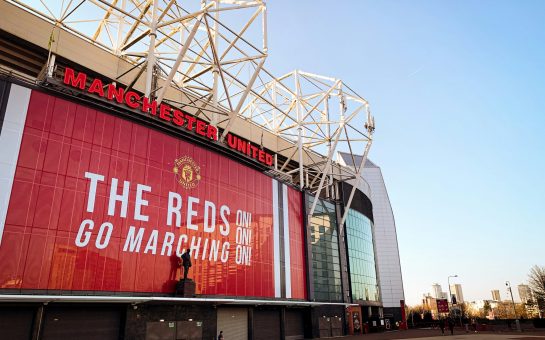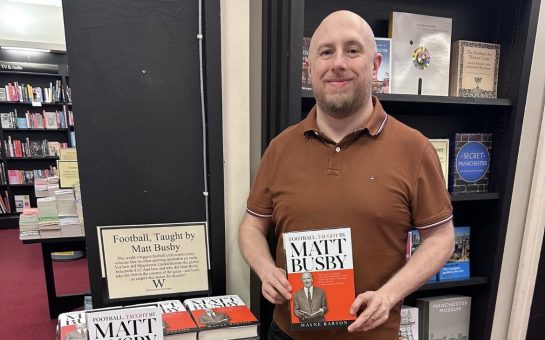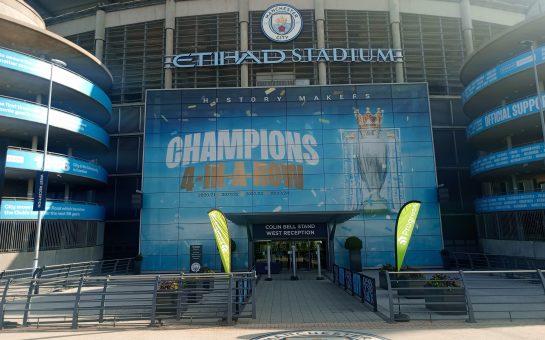When, after three and a half years with the club, attacking midfielder Rony Lopes departed Manchester for pastures new on the south coast of France this August, there was a stifled exhalation betraying a slight sense of growing exasperation amongst Manchester City fans.
Lopes (picture above), yet another academy success story proffered forward as the answer to questions surrounding the club’s initial lack of end product when it came to polishing the rough edges on countless promising stars, had slipped away without any significant fanfare.
City cannot continue in the same vein.
A club of their size, with the catchment area, world-class facilities, the planet’s best scouts, and a cheque-book literally lacking a conceivable limit simply has to start growing organically in order to prove that sustainable growth in a holistic sense is possible.
Murmurs this season are showing small signs of the club’s progression. The process was never going to be a quick-fix: the City Football Academy was not going to suddenly spring forth with an oil reserve of talent without a bedding-in period allowing the real propellers of development – the scouts, the coaches, the managers – to transform the whole setup.
And seven years after the takeover by the Abu Dhabi Group, progress is beginning to take on material form. In recent months, City’s various youth sides have all played their cross-town rivals, Manchester United, resulting in unanimous victories – including a 9-0 drubbing in the U14s bout – for the Sky Blues, save for a solitary draw.
United, famous for their prosperous Class of ’92 era, no longer rule the city: national champions in the U10s and U13s categories currently ply their trade in the eastern half of the city in the shadow of the Etihad Stadium, while City’s U16s recently beat Middlesbrough 10-0 and Sunderland 9-0 in successive fixtures.
There is a reason Robin van Persie, Phil Neville, Andy Cole, and Darren Fletcher all sent their sons to Man City’s academy as opposed to their own club’s during their time as United players.
The stats are showing that the fundamental work is beginning to filter through towards the EDS side and the first team. With 66% of all academy players hailing from Manchester and with 14 of the 26 youth internationals aged 16-19 playing for England, the supply line of local talent is not only blooming, but exploding.
What is more, 2013 FIFA U17 World Cup winner Kelechi Iheanacho, 19, is starting to make his mark on the first-team with two goals and two assists in seven first team appearances – just one of which he started: against Crystal Palace and in which he scored a goal and assisted two more.
In spite of his not being used regularly, Iheanacho averages a goal or an assist every 33 minutes of first-team football he plays.
But the young striker understands the pressures the club is under to perform, and recognised the fact that he does not play every match as realistic, claiming: “It’s quite difficult [to break into the side] because they [first-teamers] are professional players.
“They have played in a lot of competitions and a lot of games, I’m just coming up.
“I know I have the quality to prove myself anytime I have the chance, so anytime I’m on the pitch I just have to really work hard and to the instruction of the coach and try and score a goal, so that’s what I’m working on.”
Similar praise can be heaped on Manu García, the 17-year-old attacking midfielder who has spent two years in the new-fangled academy, and who made just his second appearance for the first team on Wednesday, scoring his first senior goal in a 5-1 rout of Alan Pardew’s Palace having made his debut at the somewhat green age of 17 years, 263 days.
When asked about the criticism received by the club for the lack of academy talent, the youngster from Oviedo was unequivocal in his response, saying: “I’d just say, look at the team now.
“These four players [himself, Iheanacho, Brandon Barker, and Patrick Roberts] that are playing for the U21s normally or training with the first team – younger players, and just look at this moment: who is in the first team, who is getting there.”
García, who received a spur of the moment round-of-applause following his senior debut last month against Sunderland from his U18 colleagues, was quick to confirm that the academy was beginning to show signs of efficacy.
“I think it’s a great night, not just for us, for the football club,” the Spaniard said. “I think, seeing the amazing facilities that we have, it’s being reproduced now in the first team with some youngsters coming.”
But the likes of Manu García have been seen before.
José Ángel Pozo was thrust into the lime-light last season in the midst of City’s injury crisis which saw the former Real Madrid youth player start in the Premier League against Leicester City last December. Much was expected of the striker, but he now finds himself at UD Almería in the second division in Spain.
Similarly, Emyr Huws impressed mightily during a loan spell with Birmingham City in 2013/14, but is now on loan at Huddersfield Town from League One club Wigan Athletic. John Guidetti – the poster boy of the academy in Abu Dhabi Group’s early years in charge of the club, struggled with injuries and made just a single first-team appearance and now spends most of his time on the bench at Celta Vigo.
The key for City is to ensure that the waves of promising players coming through in the lower age groups are properly primed to better-prepare them for the trials and rigours of professional football.
All academy players are granted a first-class education at St. Bede’s college courtesy of the club – just another way the academy is trying to produce well-rounded people rather than sporting automatons – and the approach taken by those running the academy is just starting to tell. Dominance is approaching.
And it is no longer a matter of if. It is a matter of when.
Image courtesy of Ligue 1 Show via YouTube, with thanks.



